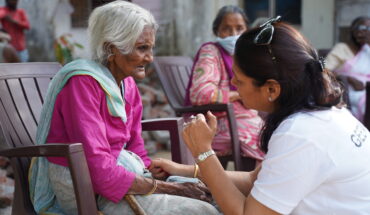Economic Survey 2024-25 while observing the performance of pharmaceutical sector in India, highlighted that the total output of the pharmaceuticals, medicinal and botanical products industry in FY23, at constant prices, reached ₹4.56 lakh crore. The total annual turnover of pharmaceuticals in FY24 stood at ₹4.17 lakh crore, growing at an average rate of 10.1 per cent in the last five years. Further, during FY24, exports accounted for 50 per cent of the total turnover, with its value at ₹2.19 lakh crore. During FY24 itself, the total import of pharmaceuticals was about ₹58,440.4 crore. Economic Survey also noted that industrial R&D is low and is also sectorally concentrated. Drugs and pharmaceuticals led the way, followed by other sectors such as information technology, transportation, defence, and biotechnology.
To promote pharmaceutical sector, various government initiatives include Production Linked Incentive Scheme that aims to reduce import dependence in critical Key Starting Materials (KSMs), Drug Intermediates and Active Pharmaceutical Ingredients (APIs), setting up of Bulk Drug Parks, scheme to support MSMEs in pharmaceutical sector to improve their quality, Jan Aushadhi Scheme to provide affordable medicines, etc.
These facts set the tone for the Union Budget. Union Finance Minister Nirmala Sitharaman in her speech while presenting Union Budget 2025 used the word, ‘medicines’ 11 times, ‘drugs’ 7 times, and ‘pharmaceutical’ twice. But emphasis remained on making import of certain drugs cheaper, and these drugs are going to benefit patients. It is crucial in case of cancer patients as the National Cancer Registry Programme has projected the rise of cancer cases and there are going to be 800,000 new diagnoses annually. In that background only, experts had advocated for building capacity through a hub-and-spoke model for cancer care. Key beneficiaries in the process are pharmaceutical MNCs too as these drugs are imported and used by these companies in their Patient Assistance Programmes (PAPs).
The Department of Pharmaceuticals has been allocated ₹5,268.72 Crore. Allocation to the DoP has been increased by almost 28.82 per cent as FY25 BE (Budgetary Estimates) put the allocation at ₹4,090 Crore. Two major initiatives namely the Promotion of Bulk Drug Parks and Production-linked Incentives Schemes received ₹1,460 Crore and ₹2,444.90 Crore respectively. Allocation was higher in comparison to previous year when both these initiatives received ₹1,000 Crore and ₹2,143 Crore.
It is the Department of Pharmaceuticals under which Central Sector Schemes/Projects such as NIPERs, Jan Aushadhi Scheme, and Consumer Awareness Publicity and Price Monitoring is dealt. For the development of Pharmaceutical Industry, there are seven initiatives for which Notes for Demands for Grants, 2025-26 listed requirements, and these initiatives are – Pharmaceutical Promotion & Development Scheme (PPDS), Assistance to Pharmaceutical Industry for Common Facilities (API-CF)/Cluster Development, Pharmaceutical Technology Upgradation Assistance Scheme (PTUAS), Promotion of Bulk Drug Parks, Promotion of Medical Device Parks, Human Resource Development in Medical Device Sector, and Assistance to Medical Device Clusters for Common Facilities (AMD-CF).
Production Linked Incentive Schemes comprised three schemes for which requirement was given. Three Schemes are – Production Linked Incentive (PLI) Scheme for Promotion of Domestic Manufacturing of Critical Key Starting Materials (KSMs)/Drug Intermediates and APIs in India, PLI Scheme for Domestic Manufacturing of Medical Devices, and PLI Scheme for Pharmaceuticals.
National Pharmaceutical Pricing Authority (NPPA) related establishment expenditure is also part of the budget of the Department of Pharmaceuticals. Promotion of Research and Innovation in Pharma MedTech (PRIP) has resource requirements. As Medical Devices Sector is a promising area so to strengthen Medical Device Industry, there are schemes like Medical Device Clinical Studies Support Scheme, Medical Device Promotion Scheme, Capacity Building and Skill Development for Medical Devices, and Marginal Investment Scheme for reducing Import Dependence. In Medical Device Industry, there are certain specialized inputs/components in manufacturing of Medical Devices which are not produced by the general industry. Hence, medical device manufacturers need to import these inputs/components. Through Marginal Investment Scheme for reducing Import Dependence, grants are offered to incentivized the manufacturing of essential or key components or upstream materials or accessories or closely related products which are used in manufacturing of medical devices. In this way, this Scheme is expected to lower import dependence.
Under the DoP, Assistance to Public Sector Undertakings (PSUs) primarily includes provision under loan kept for six PSUs namely Indian Drugs and Pharmaceuticals Limited (IDPL), Hindustan Antibiotics Limited (HAL), Bengal Chemicals and Pharmaceuticals Limited (BCPL), Bengal Immunity Limited, Rajasthan Drugs and Pharmaceuticals Limited (RDPL), and Smith Stanistreet Pharmaceuticals Limited. For Karnataka Antibiotics and Pharmaceuticals Limited (KAPL), Internal and Extra Budgetary Resources (IEBR) have been mentioned and not under budgetary support.
Key proposals on pharmaceutical sector primarily focused on providing relief to patients, particularly those suffering from cancer, rare diseases and other severe chronic diseases. 36 lifesaving drugs and medicines were added to the list of medicines fully exempted from Basic Customs Duty (BCD). 6 lifesaving medicines were added to the list attracting concessional customs duty of 5%. Besides this, full exemption and concessional duty will also respectively apply on the bulk drugs/active pharmaceutical ingredients (APIs) used in manufacturing above products.
Customs Duty Rate Changes have been affected to reduce ‘input costs’, deepen ‘value addition’, promote ‘export competitiveness’, correct ‘inverted duty structure’, and boost ‘domestic manufacturing’, etc.
Specified drugs and medicines under Patient Assistance Programme (PAP) run by pharmaceutical companies are fully exempt from BCD but with a condition that medicines are provided free of cost to patients. 37 more medicines have been added along with 13 new patient assistance programmes.
Table 1: 37 Medicines and related 13 Patient Assistance Program (PAP) added in the list of items exempt from Basic Customs Duty (BCD)
| Name of the Company | Name of Patient Assistance Program (PAP) | Number of Drugs |
| MSD Pharmaceuticals | PAP 1.0 | 2 |
| Pfizer Products India Private Limited | LorbriquaCare, DacoCare, and HemaCare | 3 |
| Novartis Healthcare Private Limited | UMAANG | 2 |
| AstraZeneca Pharma India Limited | AstraZeneca Pharma PAP | 5 |
| Johnson & Johnson Private Limited | Johnson and Johnson PAP | 7 |
| Merck Specialties Private Limited | Rainbow PAP, My Bavencio Assist Program and My Tepmetko Patient Access Program | 3 |
| Takeda Biopharmaceuticals India Private Limited | Takeda PAP | 5 |
| GSK Pharmaceuticals Limited | 1 | |
| Roche Products India Private Limited | The Blue Tree | 8 |
| Bristol-Myers Squibb India Private Limited | Bristol-Myers Patient Assistance Program | 1 |
PAPs play an important role as these programmes are expected to simplify the lives of patients suffering from cancer, hemophilia, rare disease etc. Access to effective, and quality healthcare demands a combination of products, services, systems and resources. PAPs recognize a variety of support needs such as diagnostic support services, disease information, funding support and zero interest EMI, PAP vial support, doorstep delivery, 24×7 helpline, reminders & counselling, and value-added services – physiotherapy, nutritional & psychological support. A pharmaceutical company’s support network is expected to include Primary Support Vendors, Team, and Field coordinators pan-India with presence in different parts of the county.
Rise in allocation for healthcare including Ayushman Bharat – Pradhan Mantri Jan Arogya Yojana (AB-PMJAY), the Pradhan Mantri Ayushman Bharat Health Infrastructure Mission (PM-ABHM) and the National Digital Health Mission will benefit pharmaceutical sector. Non-inclusion of the demand for return of weighted deduction for R&D expenses is on expected line as even the Economic Survey acknowledged the concentration of R&D in select sectors, and it specifically cited Drugs and Pharmaceuticals.
Five crucial health pillars namely preventive care, early detection, low-cost treatment, accessibility, and health tech as outlined by the Union Budget 2025-26 have implications for healthcare sector but have relevance for pharmaceutical sector too. ‘Heal in India’ too has incremental gains to offer for the pharmaceutical sector.
Dr. Anil Kumar Angrish-Associate Professor (Finance and Accounting), Department of Pharmaceutical Management, NIPER S.A.S. Nagar (Mohali), Punjab
Disclaimer: Views are personal and do not represent the views of the Institute.






